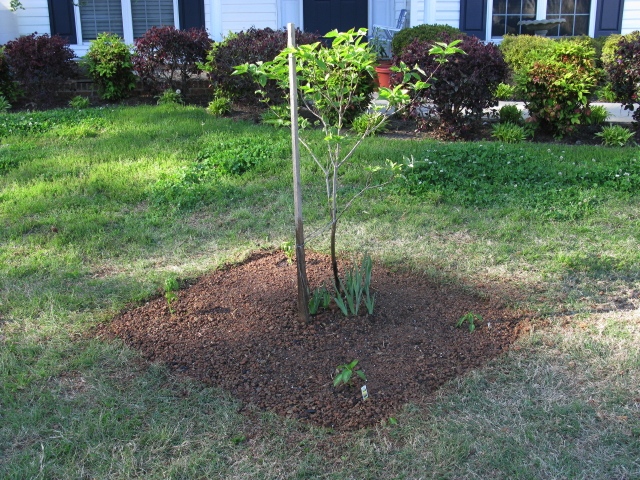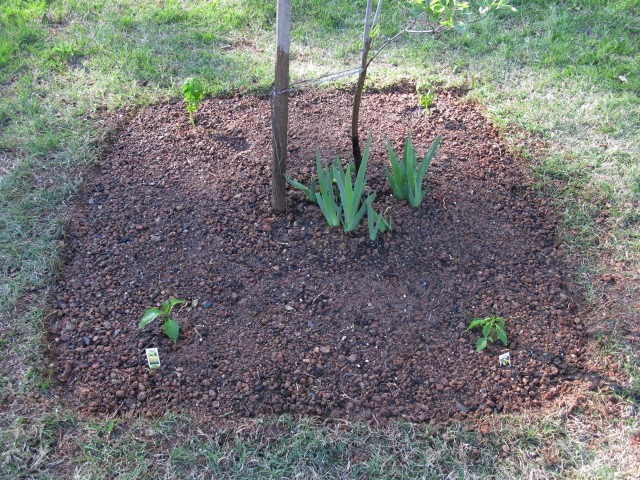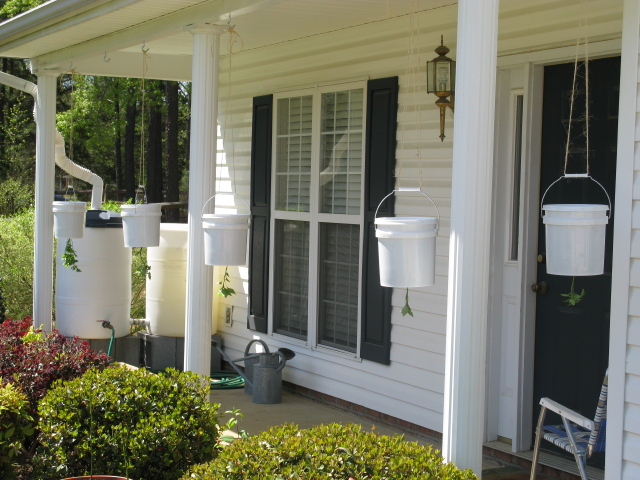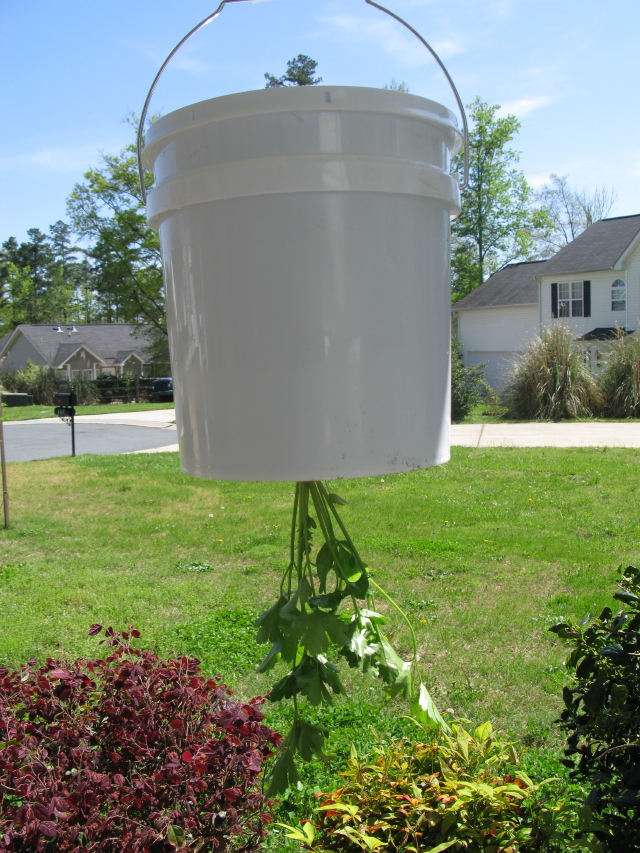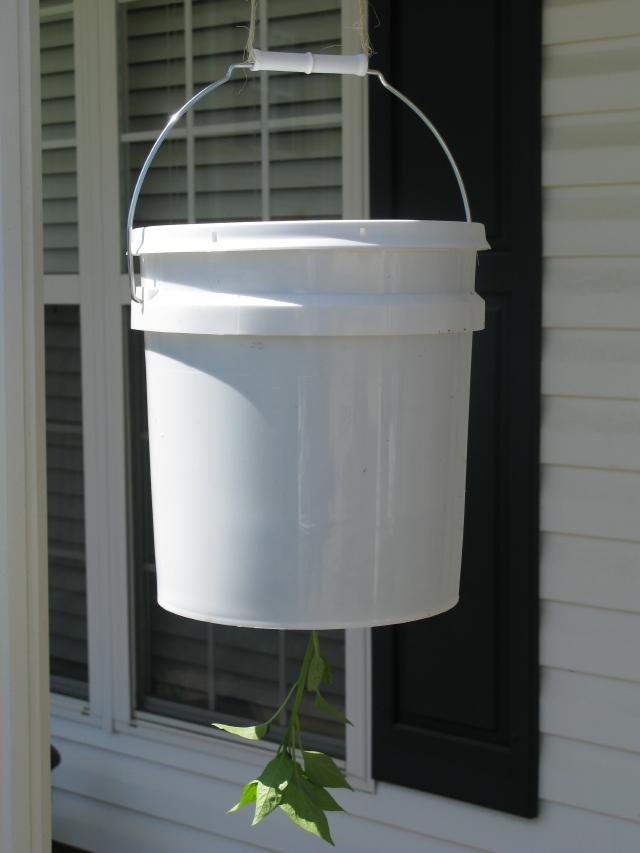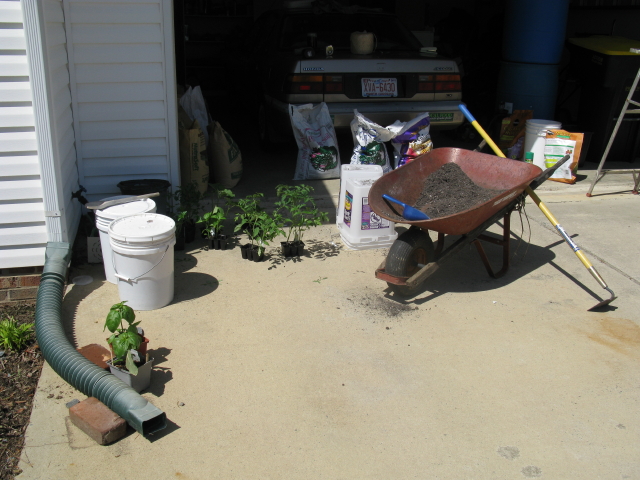In an effort to come up with more planting space in the front yard I created a bed around the dogwood and iris in the front yard. Took all afternoon, digging out the clay and sod, digging down 6-8" to loosen the soil, using a mini-tiller to break up the clods, mixing and spreading some "good" soil/amendments and mixing them in -- all for 20 square feet of garden space (4' x 5'). (Mel Bartholomew would be proud.) I had some extra plants left from the ones I bought the other day, so put two basils on the back corners and two peppers (a banana and a bell) on the front corners. In the four remaining sides I seeded beets, Siberian kale, lacinato kale, and American spinach. If time and need allow, I can keep expanding this "natural area" in the front yard (with a more flowing design instead of "square") to create a combination of flowers and edibles. The dogwood is really growing -- sending out lots of new branches. I have fed it diligently since planting late last summer.
